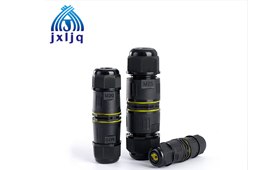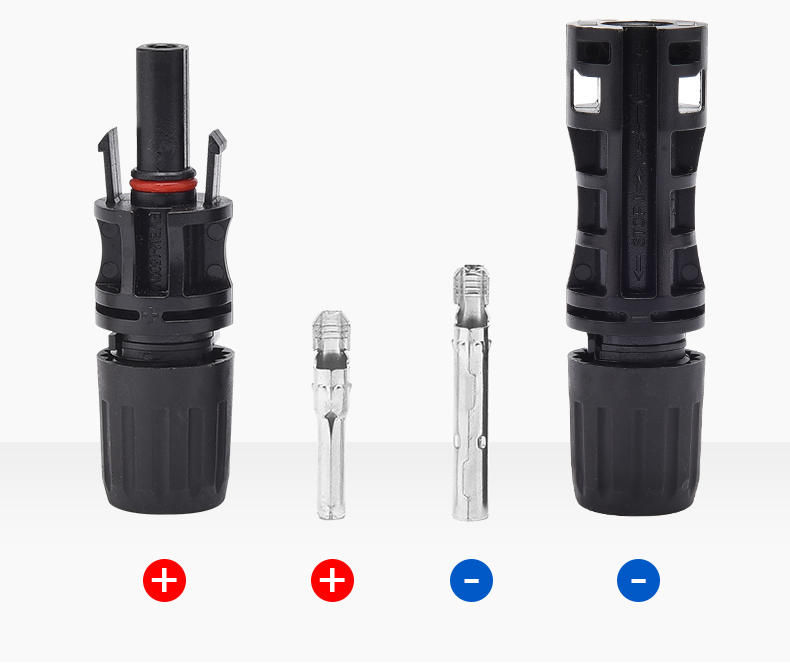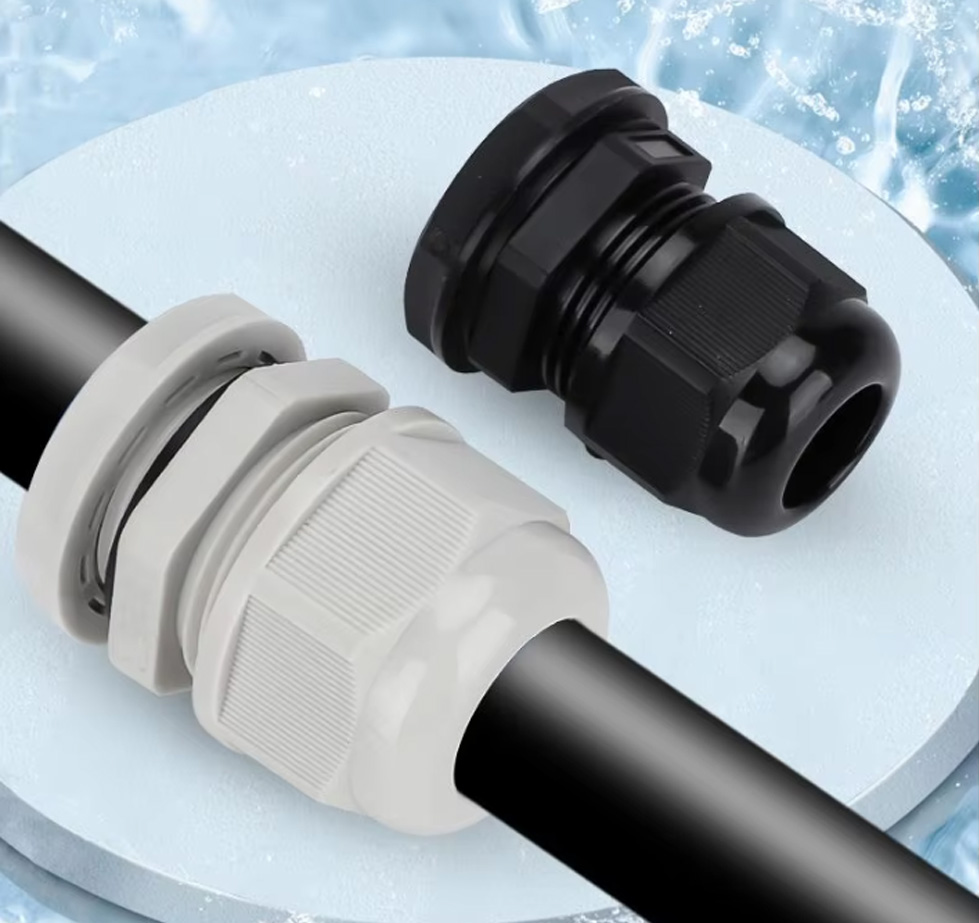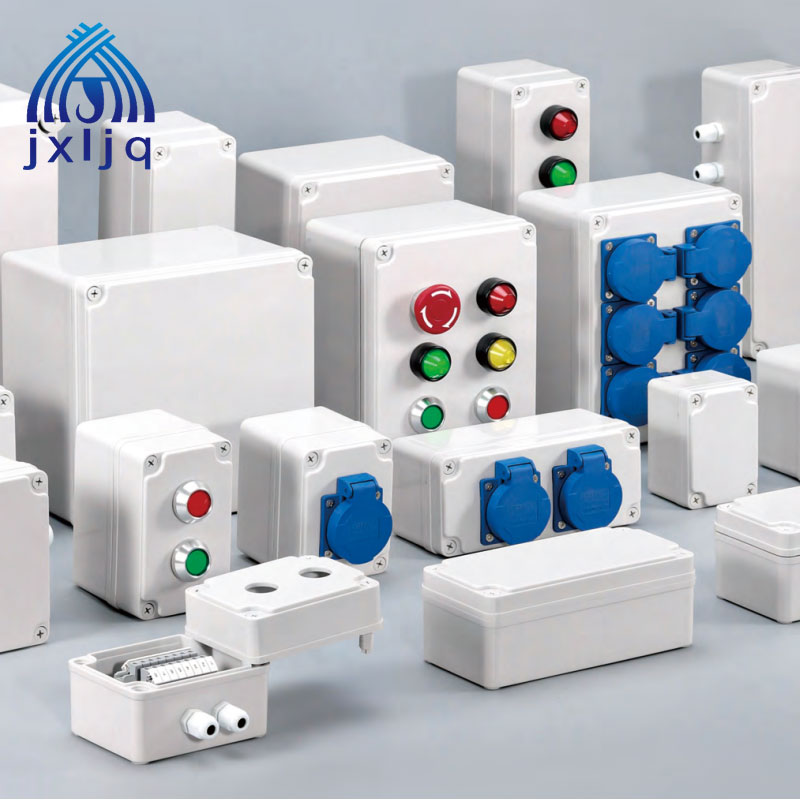Waterproof Cable Gland's Materials and Advantages
Waterproof Cable Gland has various materials to meet the needs of different environments and applications, and jointly ensure the waterproof performance, durability and safety of the cable joint. The following are the materials and characteristics of Waterproof Cable Gland:

1. Nylon:
Nylon material, especially nylon PA66, is widely used in waterproof cable joints due to its excellent wear resistance, corrosion resistance and insulation performance. It is suitable for general industrial environments, especially in occasions where waterproof sealing is required. Nylon material has good weather resistance and anti-aging properties, and can maintain stable performance for a long time.
2. Metal (such as brass, stainless steel):
Metal cable waterproof joints, such as brass nickel-plated or stainless steel, have higher strength and corrosion resistance. They are often used in harsh environments or high-demand electrical systems to ensure the long-term stability and reliability of the joint. Metal joints are usually equipped with rubber sealing rings to provide additional waterproof protection.
3. Rubber (such as nitrile rubber NBR, EPDM):
In Waterproof Cable Gland, rubber material is mainly used for sealing rings. Nitrile rubber (NBR) and EPDM are common choices because they have excellent oil resistance, water resistance, heat resistance and aging resistance. These seals can effectively prevent moisture and dust from entering the interior of the cable joint, ensuring the waterproof performance of the joint.
4. Other plastic materials:
In addition to nylon, other plastic materials may be used in the manufacture of waterproof cable glands. These plastic materials usually have low cost, good processing performance and certain corrosion resistance, and are suitable for some occasions where performance requirements are not particularly high.
It should be noted that different brands and models of Waterproof Cable Glands may use different material combinations to meet specific application requirements. Therefore, when choosing a waterproof cable gland, it should be based on the actual application environment, cable type, waterproof grade and other factors.
5. Characteristics and advantages of materials
Features of nylon material: The strength of nylon fabric is several times that of natural fiber, and it is the strongest among synthetic fibers, so it has good wear resistance, tear resistance and fatigue resistance. The elasticity of nylon is comparable to that of wool, and it can quickly return to its original shape after stretching and is not easy to deform. Nylon fabric has the best heat resistance among synthetic fibers and can maintain stable performance at higher temperatures. It has strong resistance to general acids, alkalis, greases, organic solvents, etc. and is not easily corroded.
Advantages: High strength and high wear resistance make nylon cable connectors more durable and suitable for a variety of industrial environments. Good elasticity and heat resistance enable nylon connectors to adapt to various temperature and stress conditions. Excellent corrosion resistance protects cables from chemical substances.
Characteristics of metal materials (such as brass, stainless steel): Metal materials have high tensile strength and compressive strength. Stainless steel, in particular, has excellent corrosion resistance and can resist corrosion from a variety of chemicals. Metals are good conductors, but in cable connectors, their conductivity is usually isolated by an insulating layer.
Advantages: The strength and corrosion resistance of metal connectors ensure their long-term stability and reliability. The sturdy structure of metal connectors can provide better mechanical protection and reduce damage caused by external forces. Suitable for harsh environments and high-demand electrical systems.
Features of rubber material: Rubber material has excellent sealing performance and can effectively prevent the intrusion of moisture and dust. Nitrile rubber NBR has good tolerance to grease and water; EPDM has excellent water resistance and aging resistance. Rubber material can deform when subjected to external force and quickly return to its original shape after the external force is removed.
Advantages: Rubber sealing ring is a key component of waterproof cable gland, ensuring the waterproof performance of the connector. Rubber material can maintain stable performance under various climatic conditions. By providing good sealing and protection, the risk of electrical failure caused by the intrusion of moisture and dust is reduced.
In summary, materials such as nylon, metal and rubber each have their own unique characteristics and advantages in Waterproof Cable Gland, which together ensure the waterproof performance, durability and safety of the cable gland. When selecting a cable gland, the appropriate material and model should be selected according to the specific application environment and needs.








